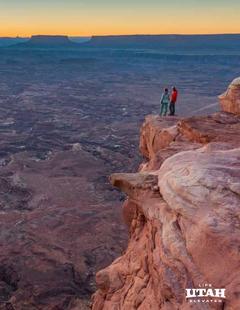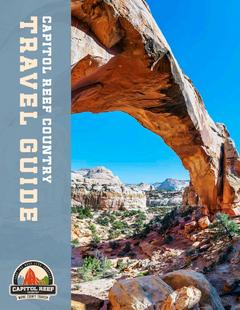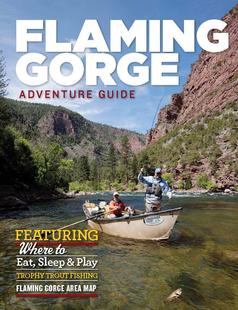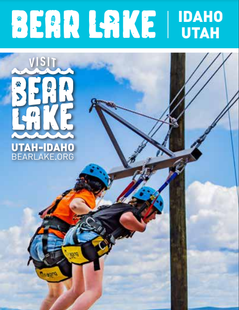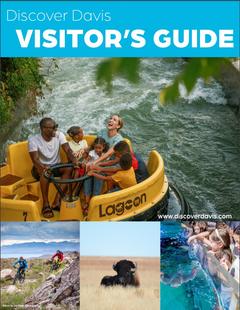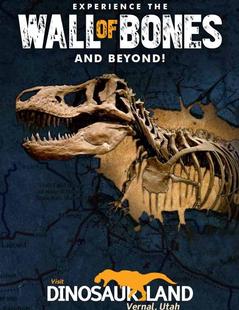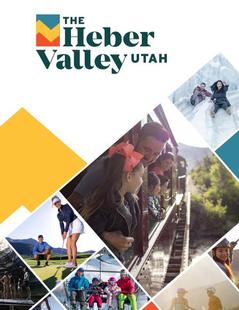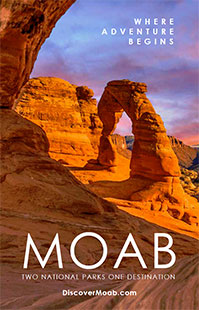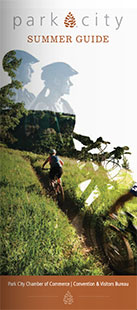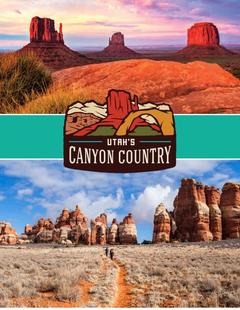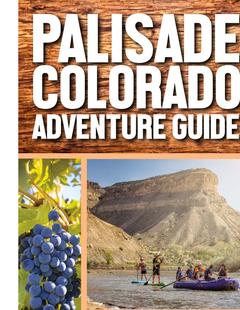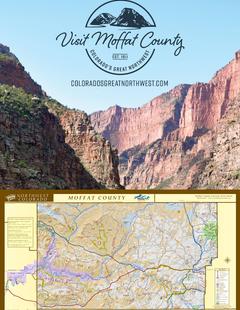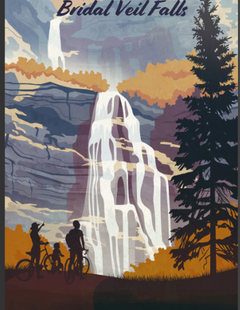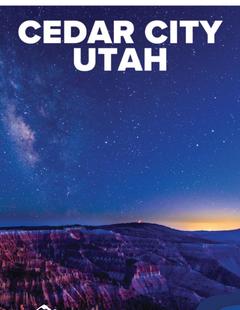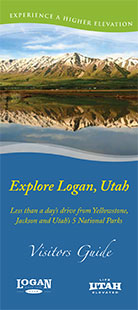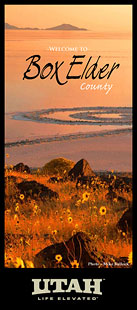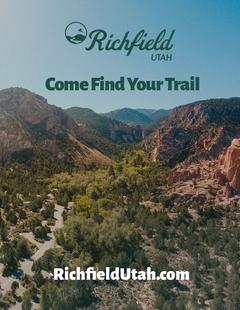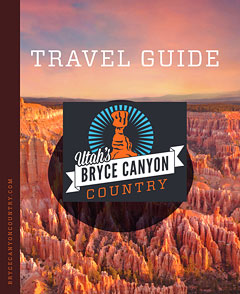Basics
- Location:
- Near Green River
- Length:
- 16.3 miles (round trip)
- Difficulty:
- Difficult
- Time:
- 3 days
- Elevation Change:
- 1250 feet
- Season:
- Midsummer to late fall.
Description
First, the trip through the Lower Black Box shouldn’t be attempted by anyone who doesn’t know how to swim. It is also important that everyone in the group have an inflated inner tube to float through the long, deep pools. I have done this trip with a small rubber raft, but I don’t recommend it. There are a number of places in the canyon where scrambling is necessary to get around rock falls, and getting a rubber raft across these obstacles is difficult.
Second, don’t try to carry anything more than your inner tube, a small floatable day pack, and a walking stick when you go through the Black Box. Both of your hands must be free when you are scrambling over the rock falls and fighting your way through the canyon narrows. You should include a 30-foot length of rope in your pack for emergency use and for lowering down backpacks. As for clothing, shorts, a shirt, and wettable boots are best. You will be walking over submerged rocks much of the time, so be sure you have good footwear. Also, forget about trying to keep your things dry. Everything you take with you will be soaking wet when you finish with this trip.
Third, timing is important. Once you enter the Black Box it is difficult to turn around. It isn’t the sort of place you want to get caught in after dark, so be sure to allow plenty of time for the trip. The season is also important. You don’t want to do this trip unless the weather is good, the temperature is warm, and there isn’t too much water in the canyon.
Details
Location:
Length:
Difficulty:
Time:
Elevation Change:
Season:
Camping Info
Additional Details:
From the car parking area to the San Rafael River and the Lower Black Box is only a 2.5 hour walk, but since it is best to get an early start when you go through the Box you should plan on going only as far as the river on the first day. There are several good campsites on the river just above the entrance to the Lower Black Box.
From the 2WD parking area just continue walking east along the jeep road towards Swaseys Leap. The road ends after 5.0 miles at a view point above the river overlooking Swaseys Leap. If you have a 4WD vehicle you can shorten the walk by driving another 2.5 miles down the road. In the past it was possible to drive a 4WD vehicle all the way to the river, but the area is now part of the Mexican Mountain Wilderness Study Area and the last 2.5 miles of the road have been closed by the BLM.
From the view point at the end of the road it is an easy fifteen-minute scramble down the last 280 feet to the river. The best route is down a small rock-filled drainage on the north side of the view point. Once you reach the river you will find a good campsite about a hundred yards upstream near the tamarisk trees. After wading the river at Fuller Bottom, you can continue to walk the jeep trail all the way out to the twin BLM signs announcing Sid Mountain Wilderness. There, take the tire track to the left, which quickly becomes a horse trail that leads back to the river.
Swaseys Leap is the name given to the narrowest part of the canyon just below the overlook point. According to local legend a cowboy named Sid Swasey once won a bet from his brother, Joe, by jumping the ten-foot gap on his horse. A few years later, probably just after the turn of the century, two sheep ranchers named Paul Hanson and Hyrum Seeley built a log bridge across Swaseys Leap for the purpose of getting their sheep across the flooded river. Amazingly, a few logs of that bridge are still in place today.
Day 2
Getting through the Lower Black Box and back is the goal of the second day. Going through the Box can be an exciting and interesting experience, but, once again, make sure you are prepared and that the weather is good before you start out. Although the Lower Black Box is only 3.7 miles long, you should allow 7 hours for the round trip, including 2 hours for the walk back from the bottom of the Box.
The first point of interest is Swaseys Leap. You will float under it just a few minutes after leaving your campsite. Looking up at the last remaining logs of Hansen’s bridge, fifty feet above the river, you will probably wonder how many sheep he lost trying to get them across.
The first few hundred yards of the journey through the Box is a very pleasant float, but soon after passing under Swaseys Leap you will begin to encounter a series of obstacles. There are about six or eight places in the upper half of the canyon where large rock falls will force you to climb out of the stream to scramble over the sandstone boulders. Although the conditions change from year to year, the rock falls are generally not difficult to get around-just tiring and time consuming. But be sure you have a rope in case you encounter something unexpected. Usually you will be back in the water again floating comfortably on your inner tube after ten minutes of scrambling.
In many areas it is possible to walk on a sandy bank near the canyon wall, but if the ground is too wet you will soon discover that quicksand is a problem. It is usually easier to stay in the water.
After the first two miles the canyon starts getting easier to negotiate, and soon you will pass the last serious rock fall. The last rock fall is located in the middle of a long straight section of river that runs almost due southeast for a full mile. As you near the end of this straight section of river you will begin to see water seeping out of the porous sandstone of the canyon walls. The seeps become more and more prodigious as you progress downstream. Also, you will notice that the height of the canyon walls is decreasing.
Eventually the river makes a sharp bend to the southwest, and then bends lazily around again to the northeasterly course. Pay attention to where the sun is. If it is shining in your face when you look downstream and if it is about the middle of the day, then the river has turned south and you are near the end of your float. When the river’s course swings to the northeast start looking for a large spring that flows down the right bank. This is Sulphur Spring, and it isn’t hard to see why it is called that. You can smell the sulphur and see the twigs and branches on the south side of the river encased in a yellowish crust. Needless to say, this water is not drinkable.
When you reach Sulphur Spring it is time to climb back out of the water and begin your trek back to camp along the east side of the San Rafael. Soon you should see a hiker-made trail that follows the bench above the river. The walk is an easy one with only a little up and down, the scenery is excellent, and the warm desert sun is welcome. There are also a number of impressive views down into the Lower Black Box on the way back. Stopping occasionally to enjoy the scenery, you should get back to your camp near Swaseys Leap after about two hours.
Day 3
All that remains of the hike now is the 5.0 mile walk back to your car. It will take about 3 hours if you parked at the 2WD area, or less if drove a 4WD vehicle down to the wilderness study area boundary.














